Uncategorized
Mushroom spore print
How to Make Mushroom Spore Prints
Mushrooms reproduce by making billions of spores that spread and grow into new organisms. You can take advantage of this phenomenon to make a beautiful print on paper. mushroom spore print .
How to Make Spore Prints
All you need are some fresh, open mushrooms, paper, and a bowl. mushroom spore print . You can use mushrooms found growing outside or buy them from the market. When selecting mushrooms for spore prints, look for these things:
- The cap should be fully open with the gills exposed
- The gills should look good, not wet and mushy
- The mushroom should feel slightly moist but not wet; dry mushrooms will not work
- There shoud not be mold spots on the mushroom
- They should look like mushrooms you want to eat. mushroom spore print
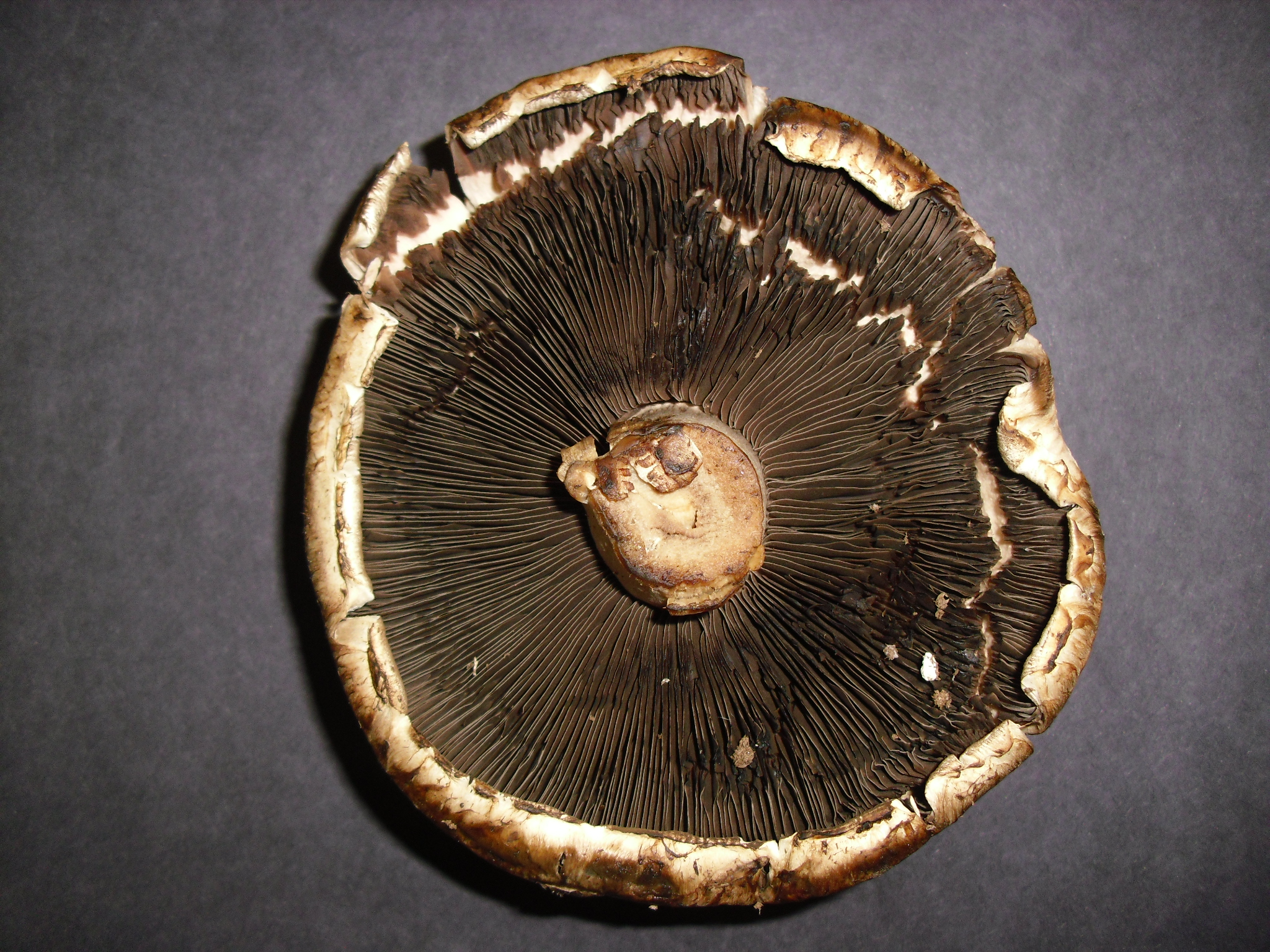
Growing Mushrooms on Mulched Beds & Paths
Why keep your plants and mushrooms separate when they naturally support one another? Using the same method as making a mushroom bed, you can grow mushrooms alongside your vegetables, perennials, or in the shade of trees. Inoculating mulched paths and beds is a great way to bring mushrooms into your garden. mushroom spore print .
Wine Cap, also known as Stropharia rugosoannulata, King Stropharia, and Garden Giant, is especially adept at growing on wood chips in a backyard. It’s resilient, adapting to different environments quickly, and can tolerate sunnier and drier conditions more readily than other species.
Oyster mushrooms, on the other hand, are the best choice for growing on straw. They’ll quickly myceliate this material, easily out-competing other microbes. mushroom spore print .
While hardwood chips work well in paths and around perennials, we recommend using straw mulch in vegetable beds. As it decomposes, straw uses up fewer nutrients in the soil than woody debris, leaving more fertility in the shallow zones where vegetable roots dwell.
This portobello mushroom is good for making spore prints.
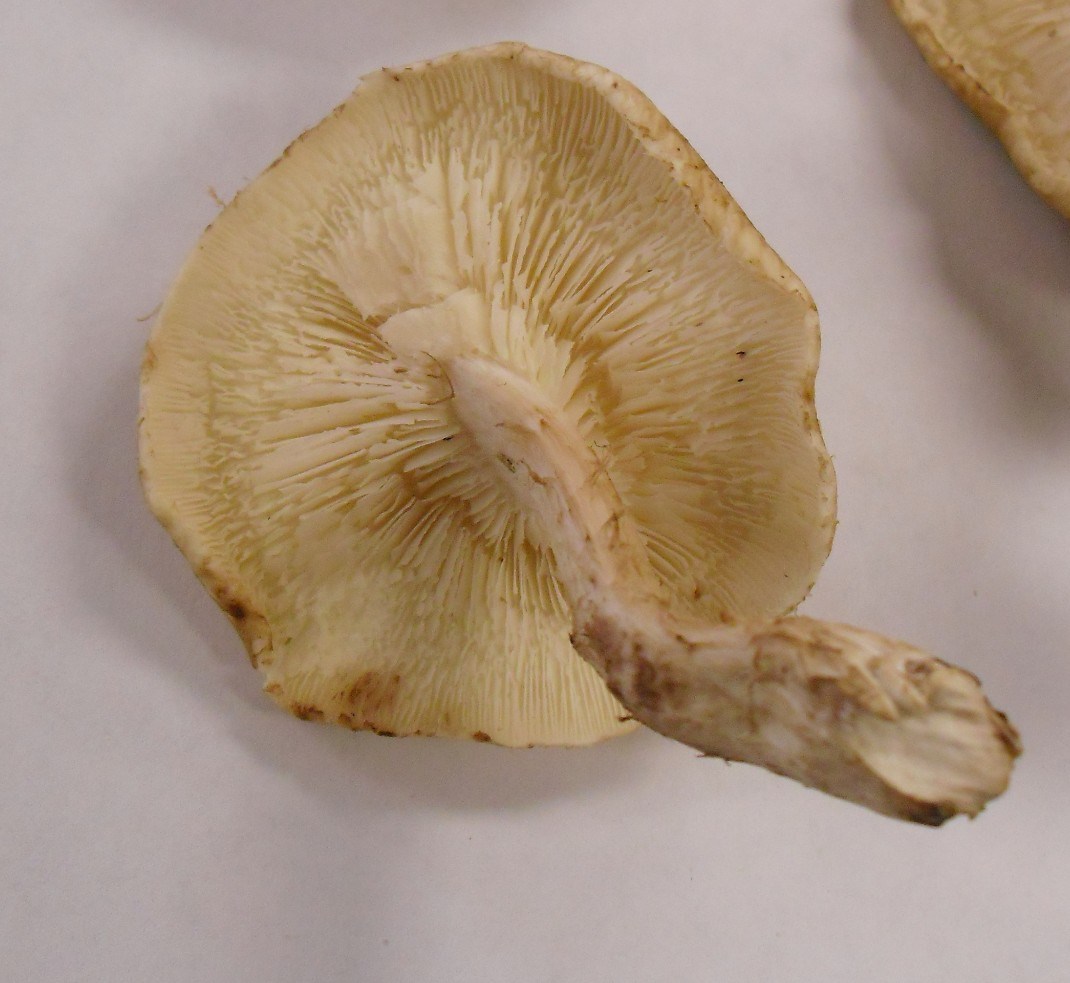
This shiitake mushroom may be a little old—notice the brown spots on the cap’s edges—but should work.
First, remove the stems. I use scissors so I don’t pull up or damage any of the gills.
Place the mushrooms with the gill side down on a piece of paper. Mushrooms with dark gills, like portobellos, have dark spores that show up well on white paper. Shiitake mushrooms have white gills and spores that show up better on black paper. Some mushrooms make both dark and light spore prints. mushroom spore print .
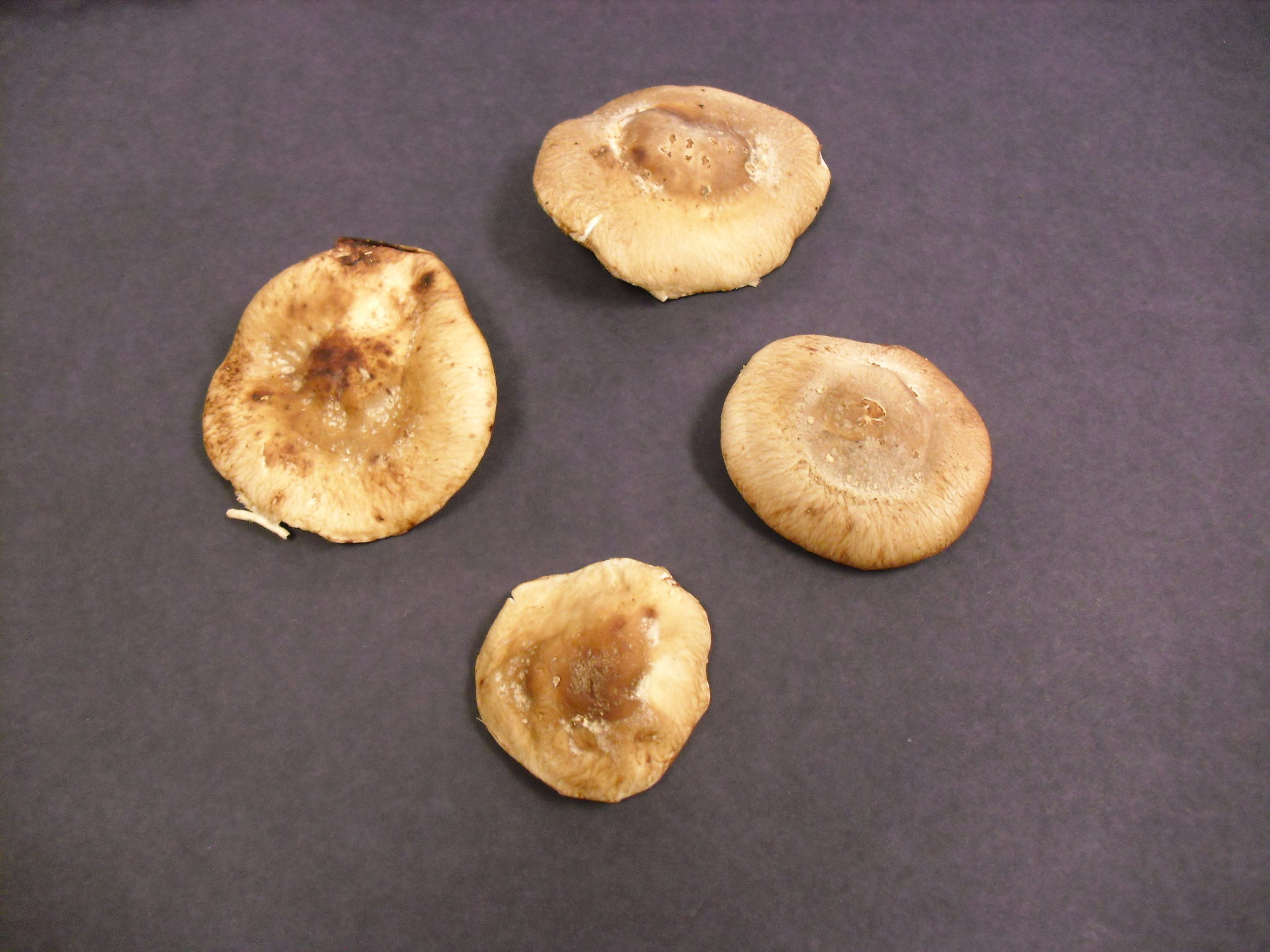
These four shiitake mushrooms were placed on black paper. They will be covered with a bowl and then left overnight. mushroom spore print
In the morning, carefully lift your bowl and the individual mushrooms and see what you get. If the paper absorbed a lot of moisture from the mushrooms, it may need to dry before you see the print very well—especially prints made on black paper. Portobello prints often show well-defined gills. Shiitake gills are not as straight and rigid as portobello gills, so you’ll get less gill definition in the print and a more wavy, swirling print. If your mushrooms are too wet, or are starting to rot, you’ll get more of a watercolor effect instead of a sharp print.
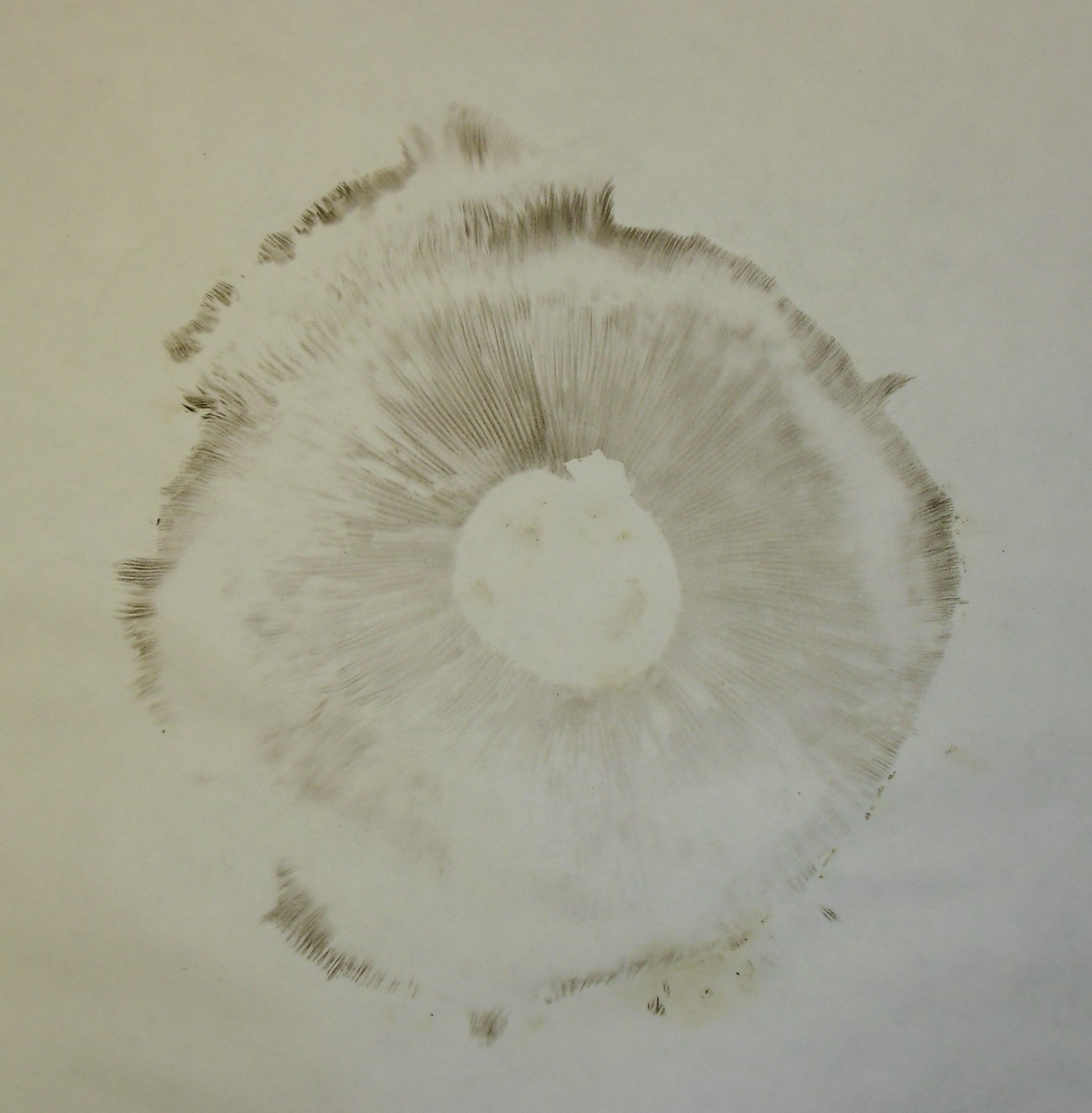
If all goes well, billions of spores will fall from the mushroom and produce a pattern that resembles the gills on the underside of the cap, like this portobello mushroom print.
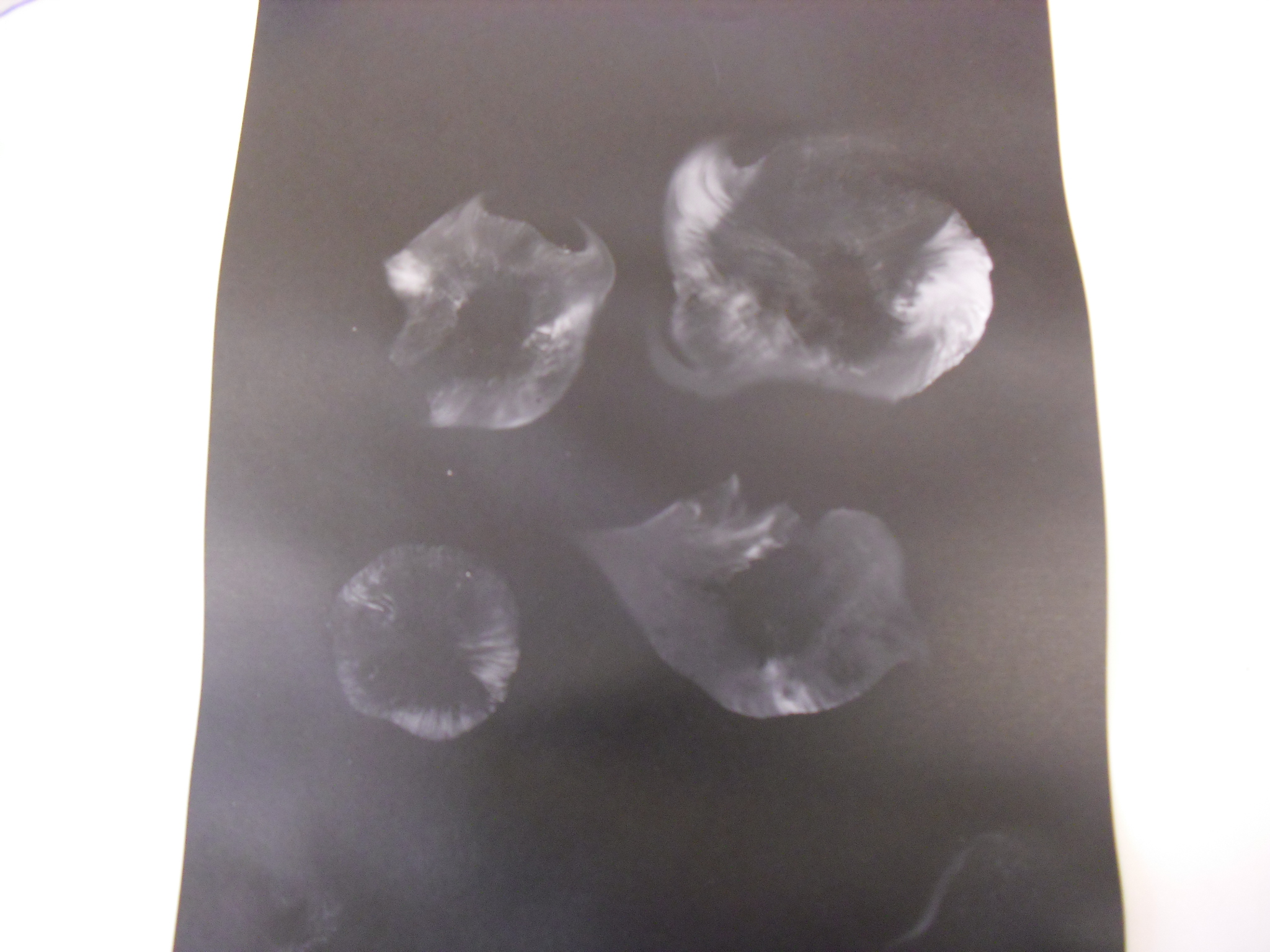
Four shiitake mushrooms leave ghostly impressions on black paper. The swirled edges were made by the uneven surfaces of the mushroom caps.
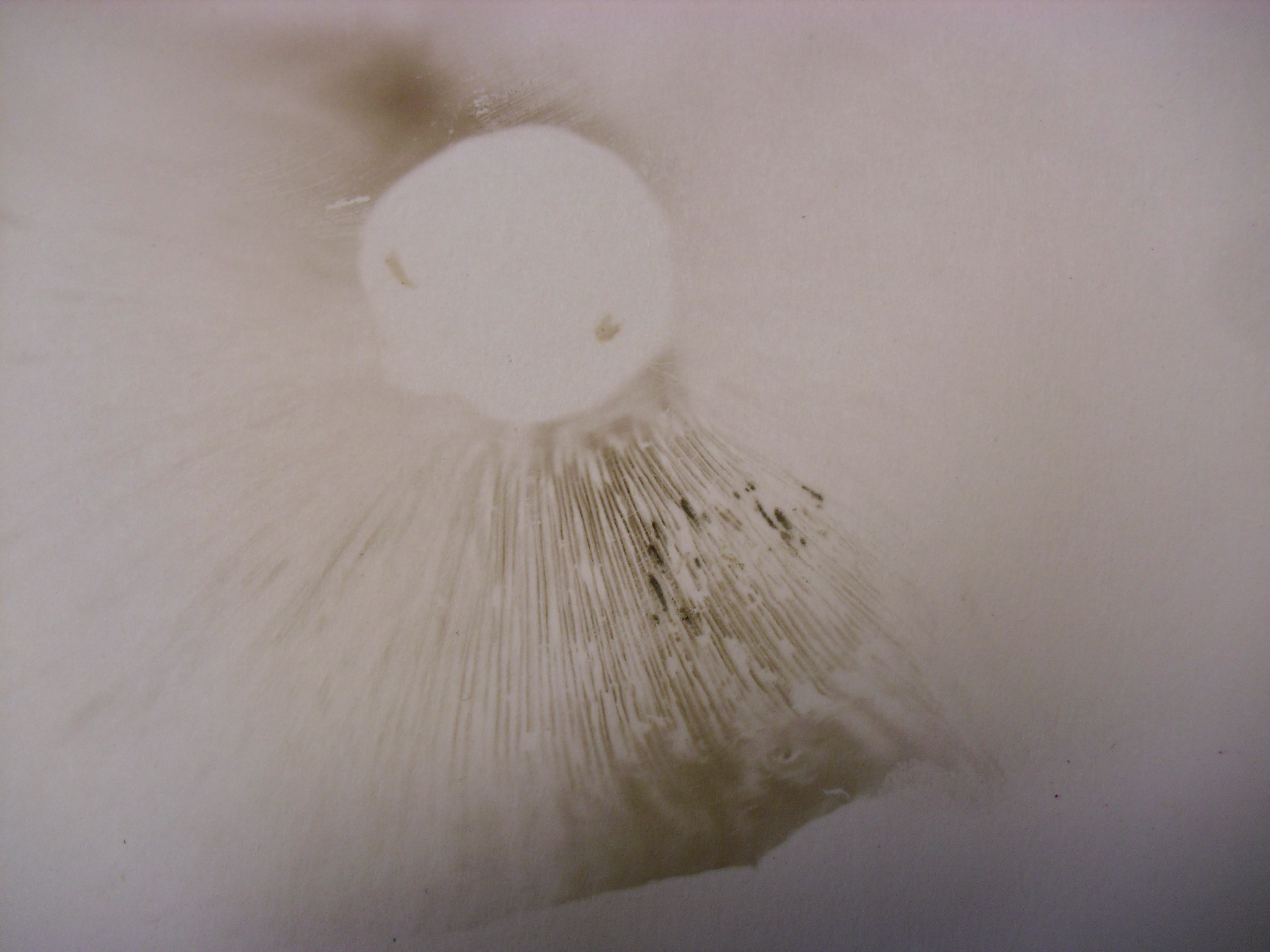
The fine lines on this print look like they might have been drawn by an extremely sharp pencil, but the spores that compose the image are much smaller than the tip of a pencil. Mushrooms with dark gills
A Little More about Mushroom Spores
Garden scientist Louise Egerton-Warburton recently told me, “Plants are cool, but fungus rules.” As a mycologist, fungus is her passion. Now, we aren’t really interested in competition or ranking organisms by levels of interest or importance because every living thing needs the others to survive. But the fact remains that we tend to forget about smaller things, especially those that are hidden from view, so let’s take some time to meditate on mushrooms. mushroom spore print
Scientists used to think of mushrooms and other fungi as special kinds of plants. The problem is that, unlike plants, fungi do not get energy from photosynthesis. They are composed of different kinds of cells, they complete a different life cycle, and let’s face it: they don’t really even look like plants. So fungi are now grouped in their own kingdom of organisms, and nobody expects them to be anything like plants.
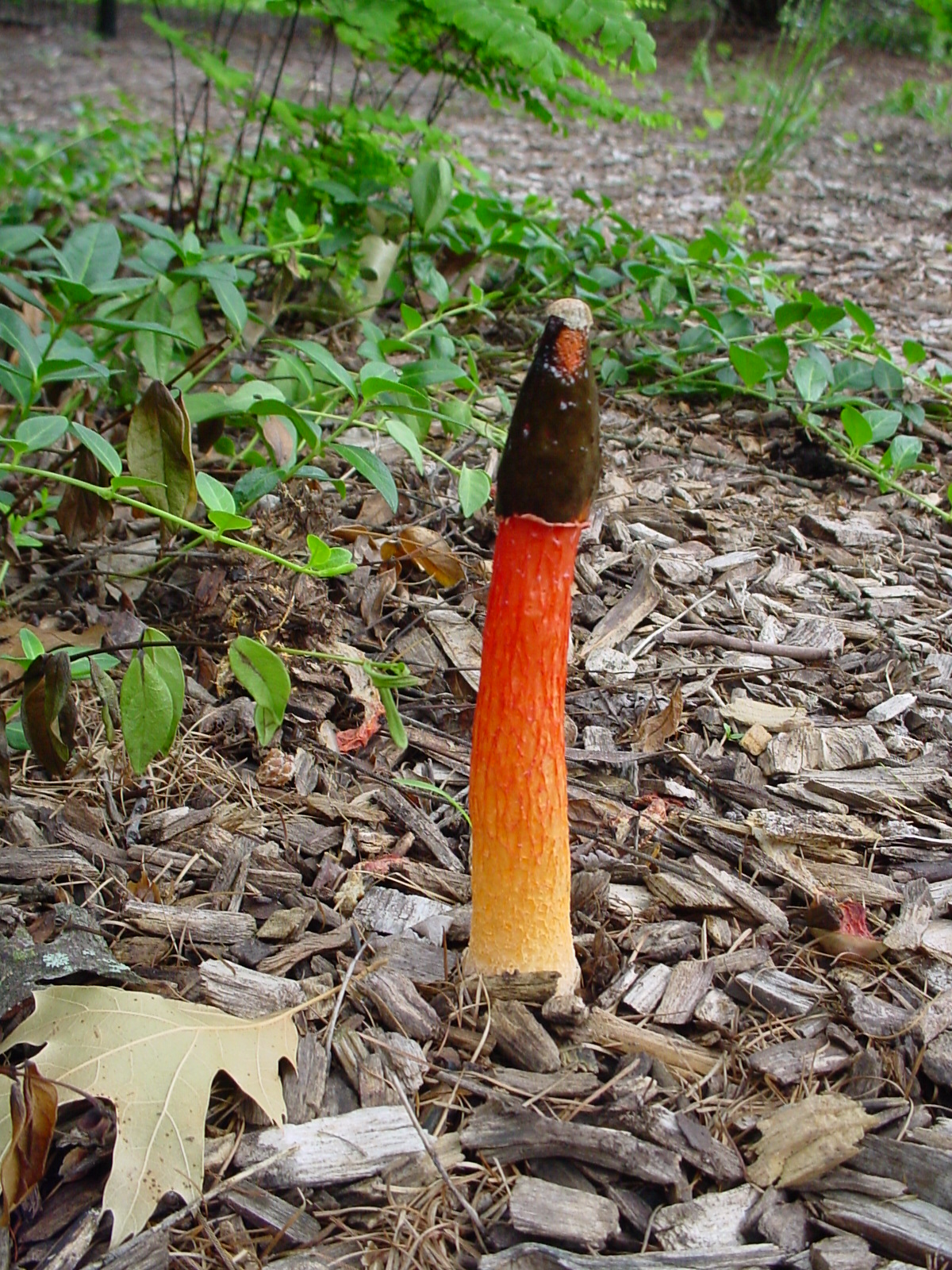
This stinkhorn fungus, Mutinus elegans, is growing out of the ground, but that is where its resemblance to green plants ends. It’s named for its obnoxious odor, which attracts flies that help distribute its spores. magic mushroom photos
There are many different kinds of fungus, so for simplicity, let’s just think about the familiar mushroom with its stem and cap. This structure is actually the reproductive part of the organism, in the same way fruit is a reproductive structure in plants. (But we are not comparing plants and fungus!) Beneath the soil where you find mushrooms growing, there is a network of branching thread-like structures, called hyphae, which grow through the dead plant and animal matter in the soil and absorb nutrients. This is the main body of the fungus. As the fungus digests organic matter, it decomposes, making it useful for plants.
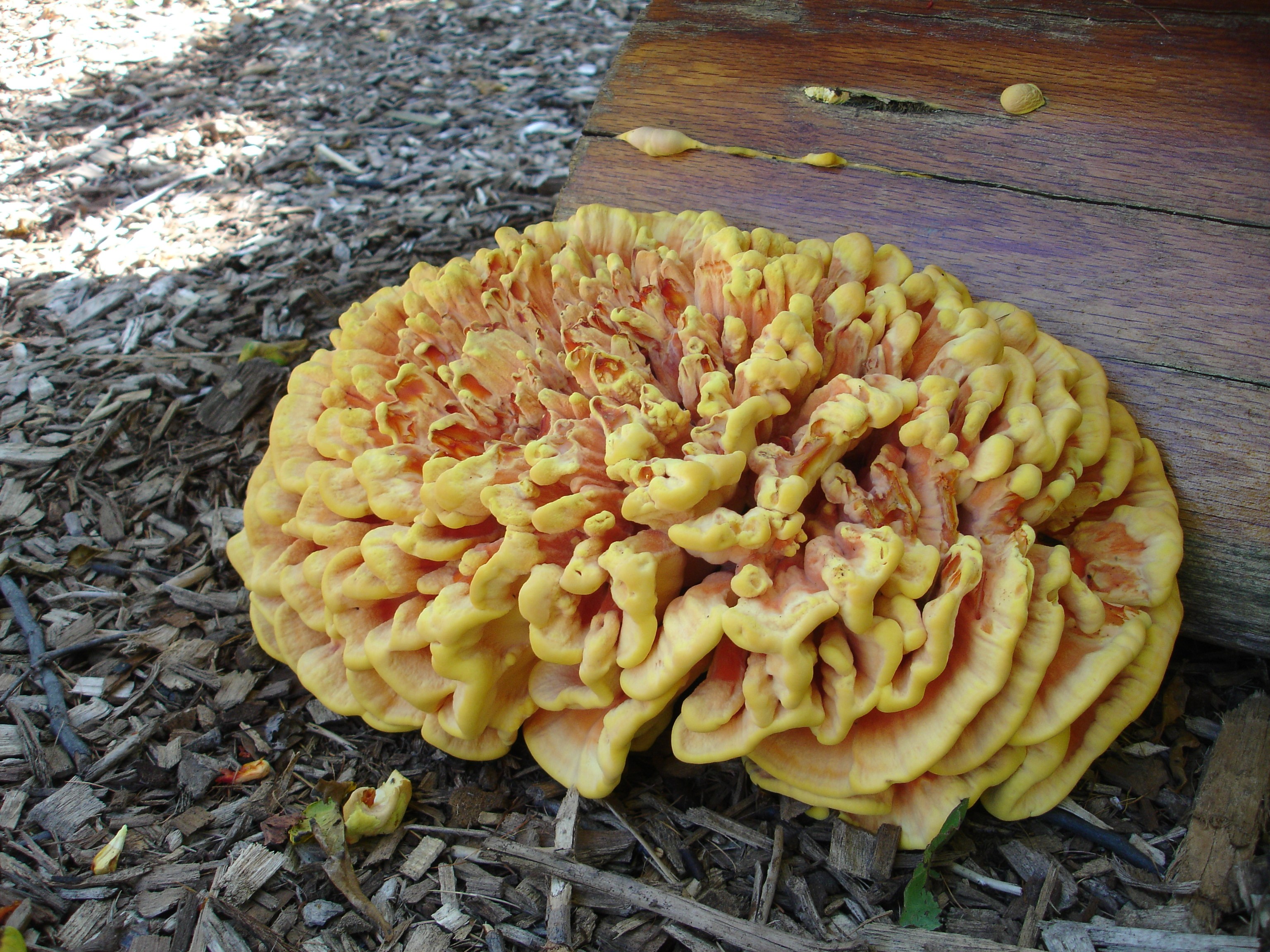
This chicken of the woods fungus, Laetiporus sulphureus, doesn’t look like a mushroom, but it also produces spores.
Back above ground, when conditions are favorable, a mushroom grows up from the hyphae. It matures and releases spores, which are like seeds. (It’s really hard to get away from comparing fungus with plants!) Spores are structurally different from seeds, even though they function to spread the organism in a similar way. Spores are microscopic and are so small that mycologists measure them in microns. A micron is one millionth of a meter. mushroom spore print .
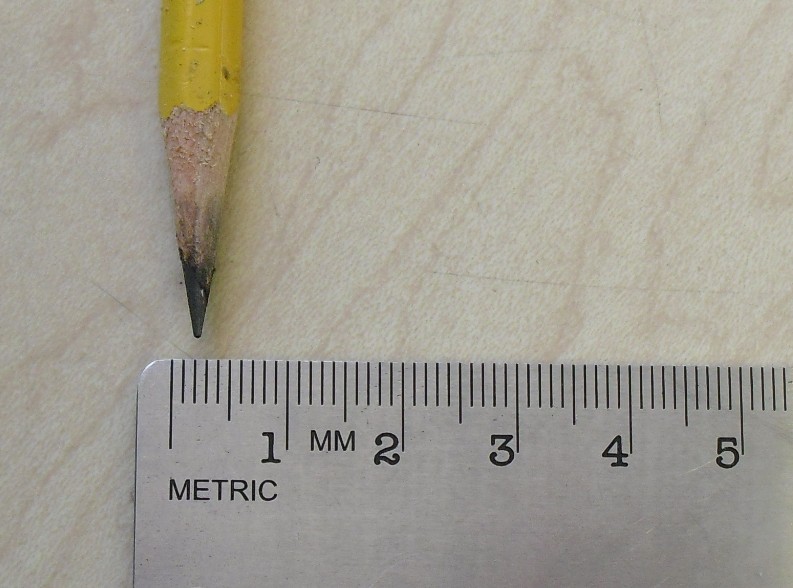
How many spores could fit on the tip of a sharp pencil? A lot! No wonder the spore print is so fine and delicate. mushroom spore print .
Look at a metric ruler. See the smallest lines that mark millimeters? Imagine dividing a millimeter into one thousand equal parts. Fungus spores measure 3 to 12 microns. It hurts my eyes trying to imagine a spore sitting on my ruler. We can only see them when there is a mass of them on a spore print. Mycologists use a micron ruler built into their microscopes to measure the individual spores. shitake mushroom spore


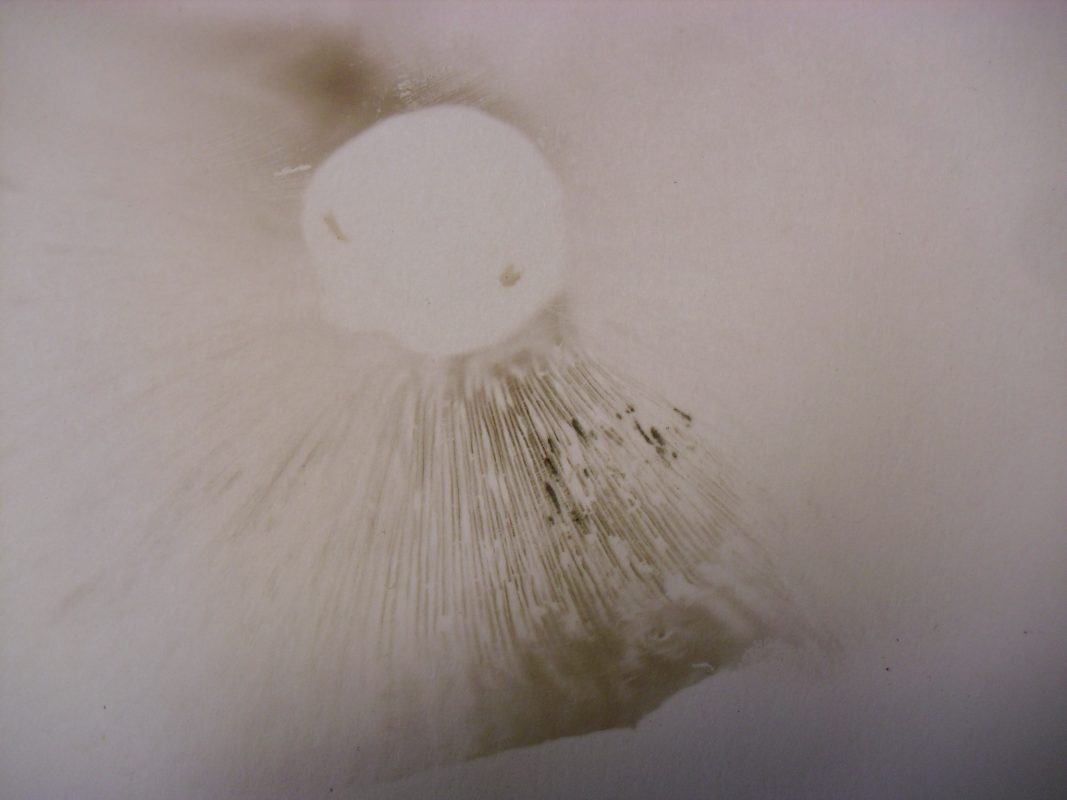
I may need your help. I tried many ways but couldn’t solve it, but after reading your article, I think you have a way to help me. I’m looking forward for your reply. Thanks.
Your article gave me a lot of inspiration, I hope you can explain your point of view in more detail, because I have some doubts, thank you.